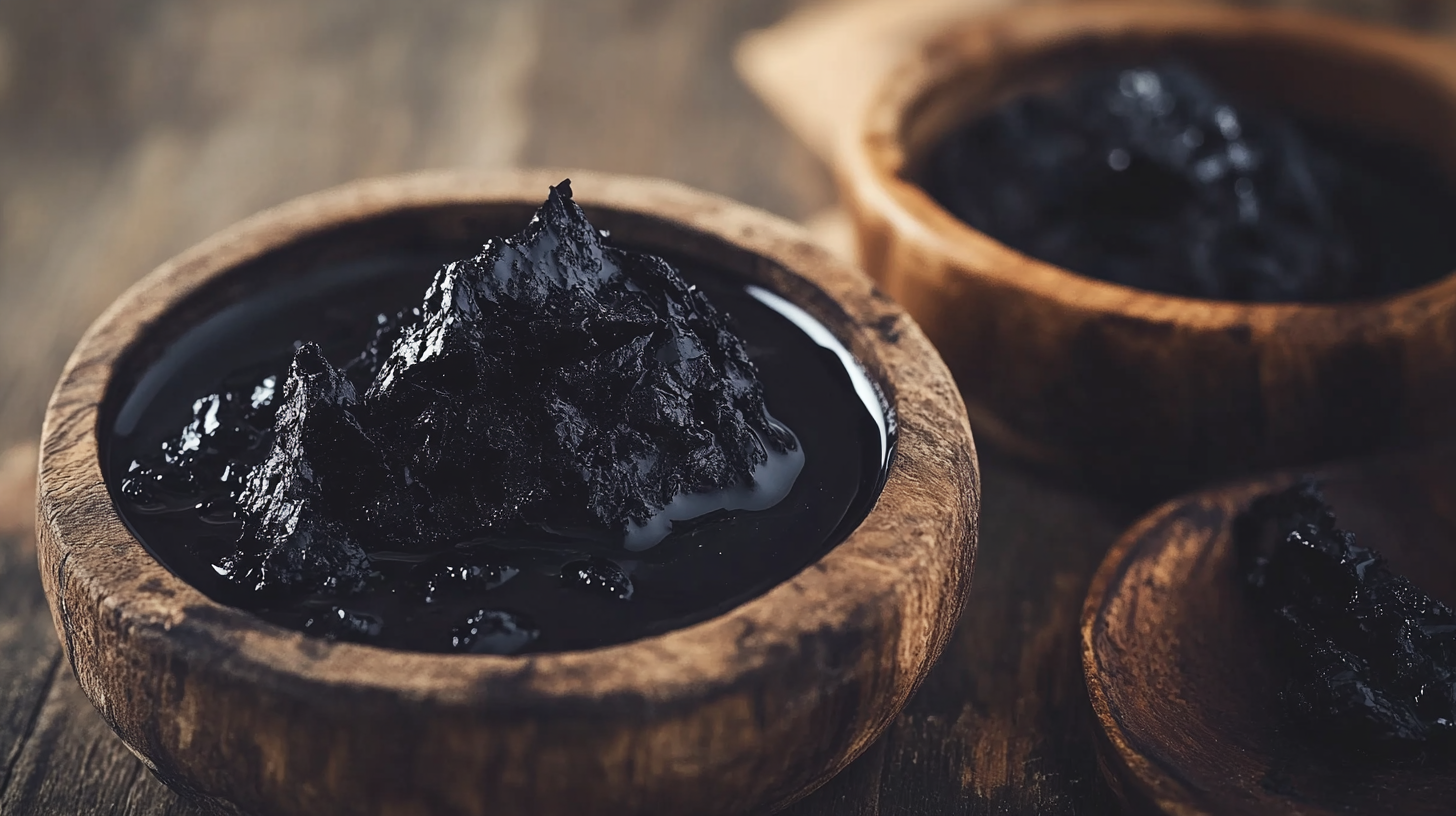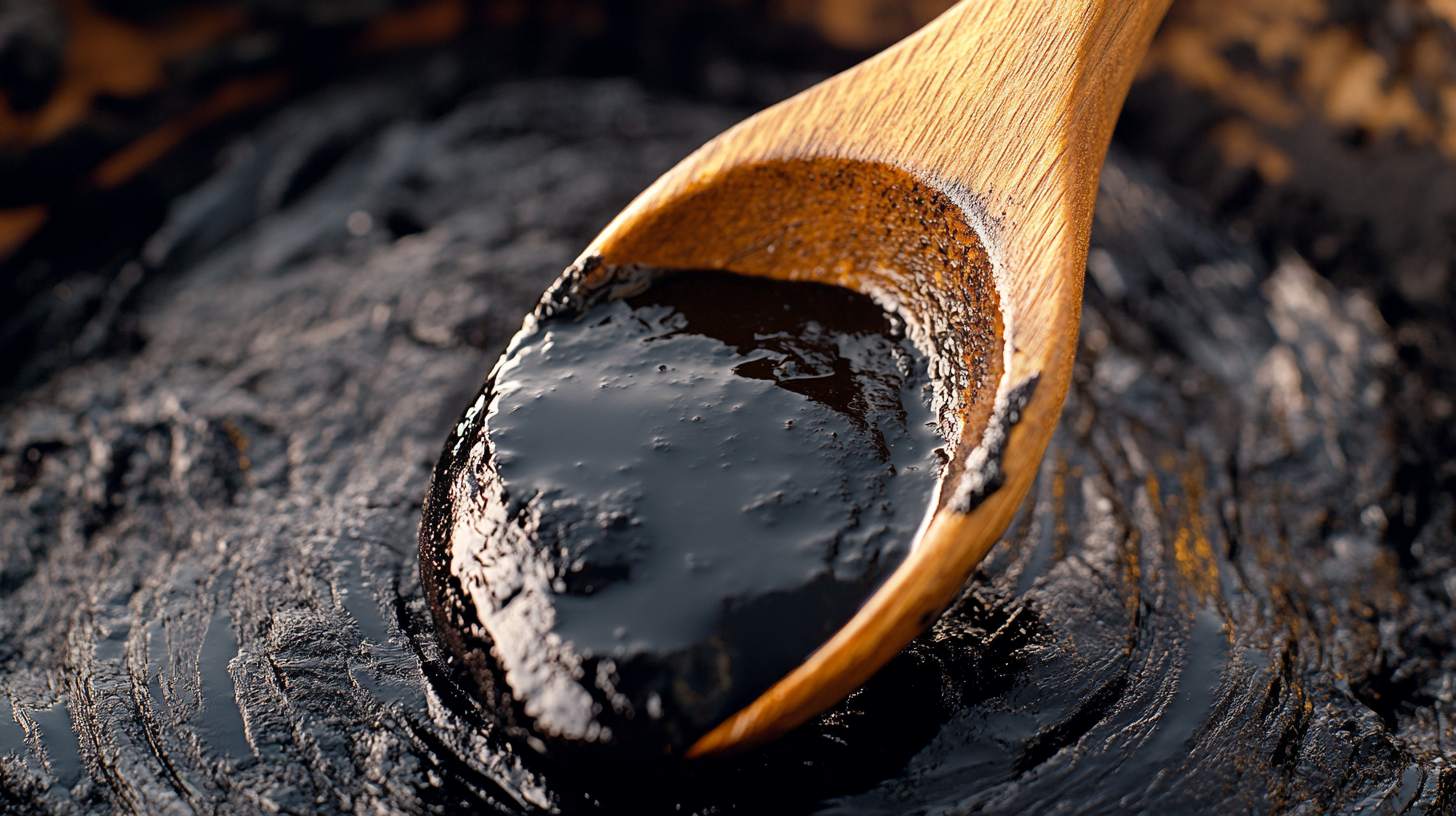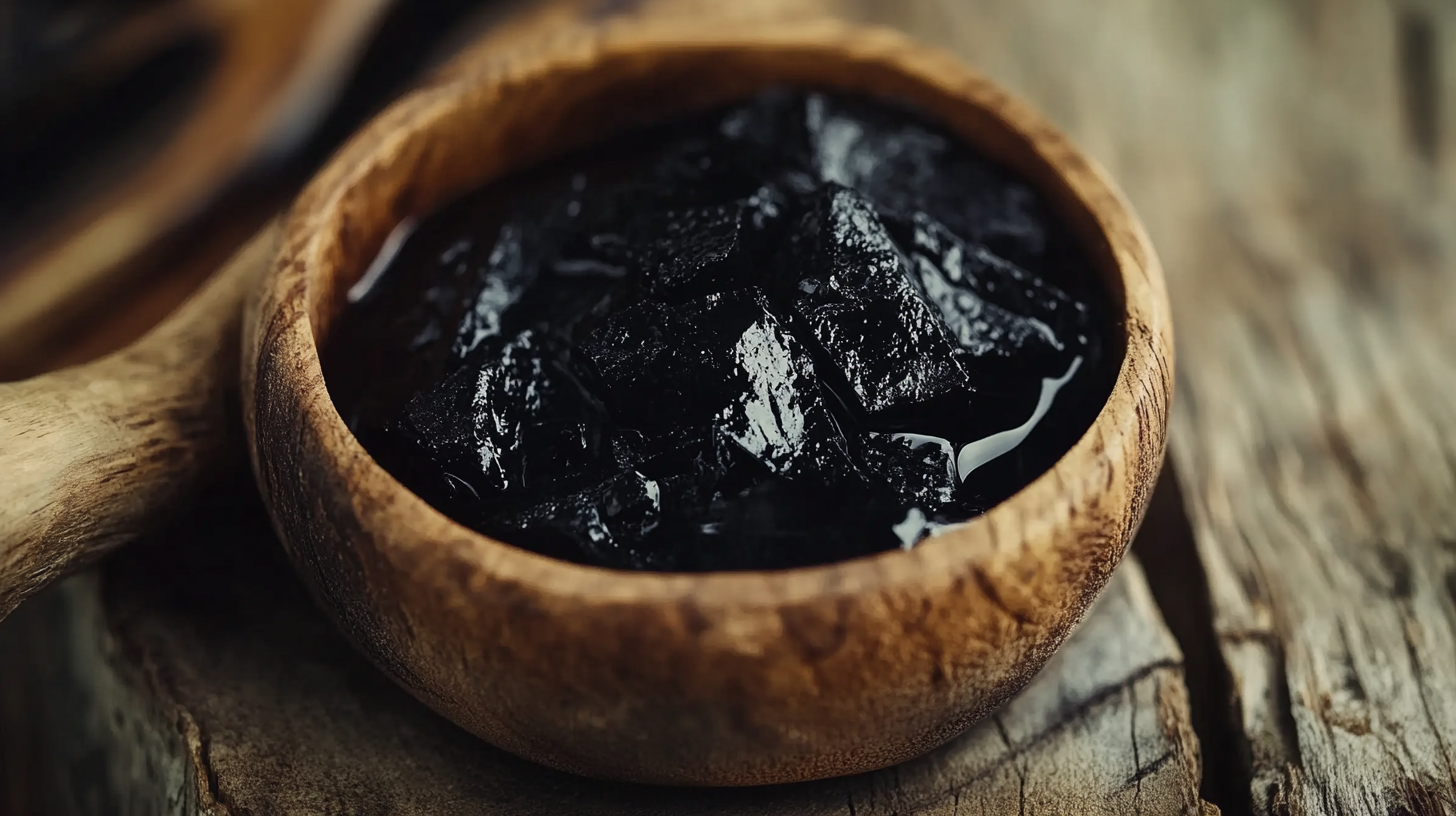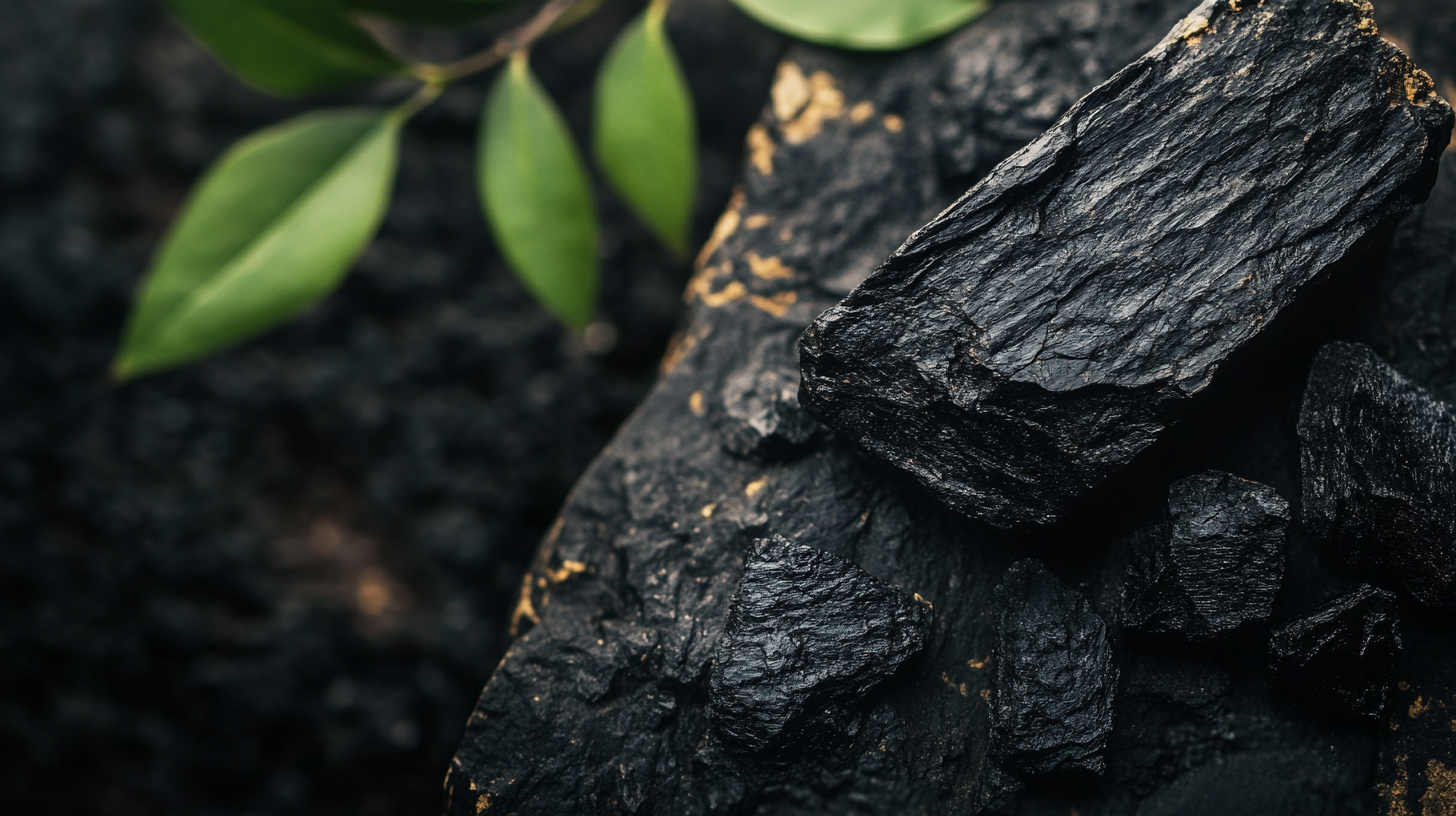The pure shilajit resin worldwide market has undergone many changes and growth in the past few years, mainly due to raising consumer awareness about the health benefits and demand for natural dietary supplements. A report by Grand View Research states that the herbal supplements market worldwide is estimated to hit USD 86.70 billion by 2027, where shilajit resin shall play an instrumental role, both for its diverse nutrient contents and for its traditional use in Ayurvedic medicine; opportunities exist also because there are increasing numbers of consumers seeking something this product provides—the assurance that it is authentic for the markets they target, with focus on compliance with global import standards.
To merge these opposing demands with their approach towards sourcing pure shilajit resin, businesses must lay down a macro level framework that encompasses rules about regulatory requirements, quality control norms, and ethical sourcing. The World Health Organization and others have emphasized the need for strict quality standards for better consumer health and the honor of the product in the eyes of the public. The core strength in sourcing pure shilajit resin surely will add to the market competitiveness of a supplier and also other help the shilajit industry in the sustainable growth path worldwide.

Pure Shilajit resin is gaining worldwide fame for its many health benefits and sustainable sourcing implications, making it an important natural material. The basic principles surrounding this strange substance reveal a history traced back to ancient traditional medicine, particularly Ayurvedic practices. The resin formed from the decomposition of plant matter over centuries is enriched with minerals, fulvic acid, and other compounds promoting overall well-being. With an upsurge in demand for natural health supplements, there also comes the demand to set the record straight on the import standards necessary to claim for global commercialization of pure Shilajit. Understanding these standards is instrumental in defining the quality and safety of Shilajit in terms of sources and distribution. Though every country establishes its regulations on health product importation, thus an in-depth understanding of Shilajit's scientific properties and the legal backdrop concerning its trade is imperative. The same conscious market principles displayed towards sustainability are now being applied to the Shilajit market. For instance, with the rise of eco-packaging and eco-materials, there is an emerging cognizance of the necessity to lessen environmental impact while satisfying consumer demand. As the global community seeks to balance tradition against the backdrop of modern standards, the future of pure Shilajit resin lies squarely in its ability to elevate its image through the application of strict import guidelines and sustainability in practice.

Grasping the intricacies involved in international import standards necessitates an understanding of the requirements that pure shilajit resin must meet. These standards ensure both quality and safety, hence facilitating smoother marketing acceptance in different countries. In a world where consumer safety and product authenticity are of utmost importance, being updated with the latest guidelines imposed by the importing countries may offer the crucial edge.
The discourse concerning import standards has opened up the issue of regulatory compliance. For example, with heightened scrutiny by the Indian Government on imports of goods including food and raw materials, the same focus will start to prevail over shilajit resin. Importers would need to ensure their product abides by rigorous health and safety standards, including requirements for endless documentation and testing of the product. In so doing, such preventive compliance measures build confidence within consumers and regulatory authorities, which will count positively when the product is ultimately launched in the market.
Another good factor is that knowing how to distinguish between high- and low-grade shilajit resin can help ensure smooth sourcing and importing. This, in turn, becomes an examination covering aspects like where the resin is sourced from, how it is manufactured, and environmental practices used therein. With the rise of demand for natural health products all over the world, setting our import standards in alignment with consumer expectations will not only enhance marketability but also widen the debate around safe and ethical sourcing.

Himalayan Shilajit is a resinous formation found high above in the Himalayas that captures the attention of health enthusiasts around the world due to its plentiful supply of key minerals and bioactive substances. As the demand for this ancient remedy is rising, it becomes critical for consumers to familiarize themselves with guidelines for sourcing so that quality and authenticity can be ensured. All legit Shilajit products have a dark color, almost slimy appearance, and oftentimes look like thick molasses or thick pitch. It is important to select lab-tested Shilajit for purity and potency to avoid any fake versions, which may harm health benefits.
These guidelines should help buyers in the identification of quality Shilajit: The brand they favor must be transparent in its sourcing practices, including providing clear information on the geographic regions of harvest, extraction methods, and testing results. It ought to be Shilajit coming from altitude, preserving all the medicinal properties. Authentic suppliers should also facilitate presentation of certificates of authenticity, with third-party lab results, which can help ease any doubts regarding the efficacy and safety of the resin.
Sustainable harvesting must also be in consideration. Authentic suppliers are often committed to protecting the environment, ensuring their harvesting doings will never damage the subtle ecosystem of the Himalayas. Therefore, an informed and conscious consumer can traverse the gratuitous paths of Shilajit, profiting therefrom, while aiding in upholding unethical practices in wellness.

Regulatory compliance is a complicated maze for businesses wanting to import pure shilajit resin. For an extremely potent supplement, shilajit is enriched with minerals and fulvic acid and has found popularity in different parts of the world, more so in the wellness and health sector. The Grand View Research report states that the global shilajit market size was valued at about USD 1.4 billion in 2020 and is expected to grow at a CAGR of 10.9% between 2021 and 2028. Due to this growing interest, therefore, it is the importer's responsibility to adhere strictly to the international standards for import.
Importing shilajit resin entails complying with the requirements of many regulatory frameworks, which differ according to the region. The Novel Foods Regulation adopts very strict rules in the European Union and requires comprehensive safety assessments on products which were not consumed in a significant way within the EU prior to May 1997. In the same way, shilajit is treated in the United States as a dietary supplement, according to the Food and Drug Administration (FDA), and therefore is subject to Good Manufacturing Practices (GMP) and labeling to guarantee safety and efficacy for the consumer.
On top of that, sourcing guidelines are vital to ensure both quality and compliance. Importers must validate the authenticity of their shilajit through testing for contaminants, including heavy metals and microbial loads. The industry standards developed with organizations like the American Herbal Products Association (AHPA) recommend the importers conduct third-party lab testing to confirm their shilajit accordingly, keeping consumer safety and regulatory compliance in mind. This thorough due diligence will build credibility and trust for the growing shilajit marketplace while ensuring compliance.
The sourcing of pure Shilajit has been the topic of much discussion and research in the past years and more evidently as people are becoming more conscious about the ethicality and sustainability of a few practices in the wellness market. The market for Shilajit globally is expected to grow at a compounded annual growth rate of about 12% in the next five years due to increasing consumption of various natural supplements among health-conscious consumers. Thus, all business entities concerned with the sourcing of Shilajit must comply with the best practices to ensure environmentally and socially sustainable operations.
Sustainable sourcing may be viewed in one sense as the establishment of links with other local communities that harvest Shilajit. Through fair payment and good working conditions, the companies contribute to the economic development of such regions. The World Economic Forum states that ethical sourcing can significantly impact improving local producers' livelihoods and nature conservation. A lot of research needs to be done to know local ecology and harvesting practices to reduce the harms brought about by such activities and conserve the natural habitat from which Shilajit is derived.
Companies must, however, include the measures taken in favor of a fair working environment for workers. They would, therefore, be open to establishing trust and transparency within the supply chain with consumers. Sourcing systems for traceability can now track Shilajit in every phase from raw source to finished product in terms of confirming that every batch has met testing grades for quality and ethics. According to a journal published in the Journal of Cleaner Production, businesses investing in transparent sourcing gain a good reputation but will also comply with the rigorous and rising regulations on sustainability and ethical practices. Thus, companies will have the opportunity to share in the value created by increased demand because of the best practices they commit to for a sustainable future.
Key import standards for shilajit resin include ensuring quality and safety through regulatory compliance, extensive documentation, and product testing to meet health standards of importing nations.
Regulatory compliance is crucial as it fosters trust among consumers and regulators, significantly affecting the product's market acceptance and ensuring consumer safety.
Consumers can identify high-quality shilajit by selecting products that have a dark, tar-like appearance, are lab-tested for purity, and provide transparency about sourcing practices and extraction methods.
Buyers should look for brands that offer certificates of authenticity, third-party lab results, and clear sourcing information from high-altitude regions known for genuine shilajit.
In the EU, shilajit imports must adhere to the Novel Foods Regulation, requiring comprehensive safety assessments. In the US, importers must follow Good Manufacturing Practices (GMP) and proper labeling under the FDA's dietary supplement regulations.
Sustainable harvesting practices are important as they ensure that sourcing methods do not harm the delicate ecosystems of the Himalayas, promoting ethical practices in the wellness industry.
Third-party lab testing is essential for verifying the authenticity and safety of shilajit by checking for contaminants such as heavy metals and ensuring compliance with industry standards.
The increasing global interest in natural health products, alongside shilajit's rich profile of essential minerals and bioactive compounds, contributes to its growing demand in wellness and health sectors.
Importers can build trust and credibility by engaging in thorough due diligence, ensuring regulatory compliance, and conducting rigorous testing for product authenticity and safety.
When evaluating shilajit suppliers, prioritize their commitment to transparency in sourcing, sustainable practices, certification of products, and results from independent laboratory testing.